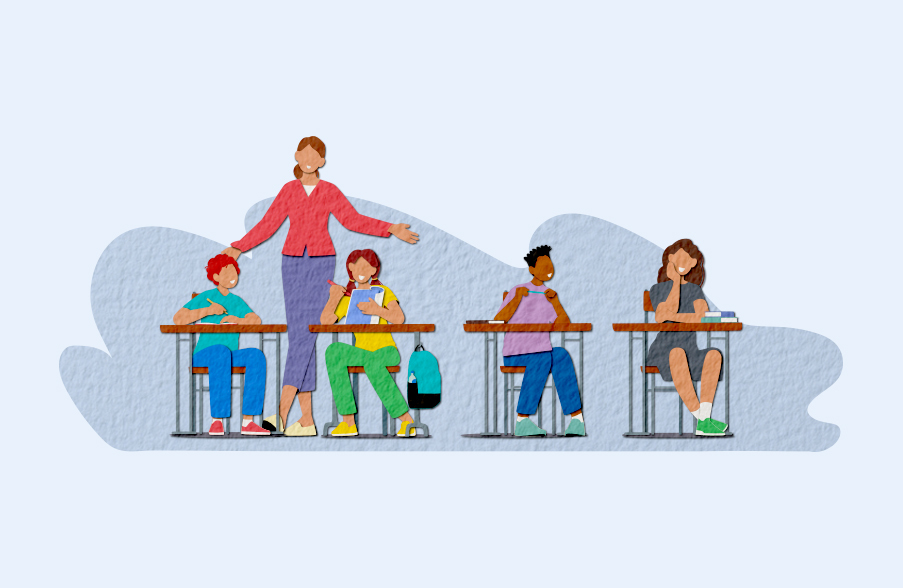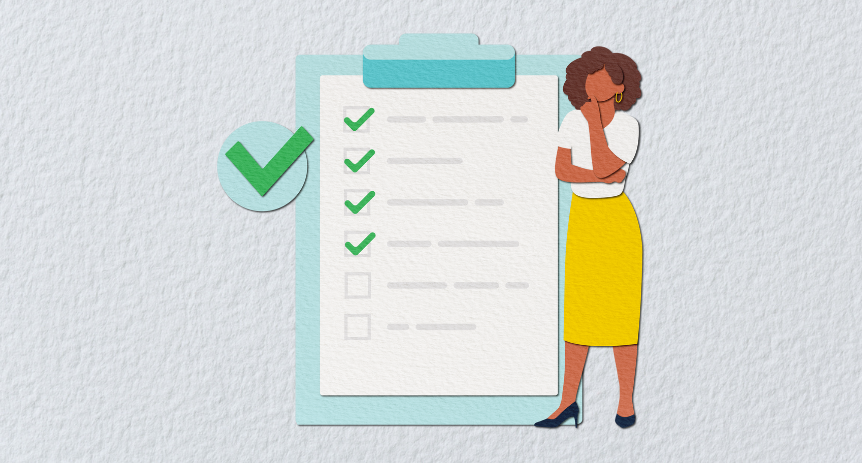Subbing in high-school classrooms can be rewarding, but it also brings a unique set of challenges. Teenage students are, of course, more advanced in their development than their elementary- and middle-school peers. They’re capable of understanding more complex concepts and engaging in more nuanced discussions and debates. Ultimately, high-school students are still kids, albeit ones caught between the world of childhood and adulthood.
Check out these suggestions to help you tailor your approach and succeed as a substitute teacher in a high-school classroom.
Getting in the right frame of mind
The boy scout rule
A confident teacher creates a confident student, and a great way to show confidence is to be prepared. One of the best ways to do this is to come in as early as possible on the day you sub to give yourself plenty of time to review the teacher’s lesson plans.
In a best-case scenario, the teacher will have left a sub folder, complete with a schedule, roster, and a list of students who can be depended on to help you. Worst-case scenario, you walk into nothing and have to ask the teacher across the hall for help. In either situation, arriving early is important. You want to look prepared when the students come into the classroom.
Remember: Kids are kids, even in high school. They need to know that someone, besides them, is in control.
The golden rule
Maintaining control is not about being a bully. An adult who comes in like a big, bad mob boss will be very ineffective with high-school students. Teens will do just about anything for an adult who has earned their trust. On the flip side, they will do nothing but cause problems for one who treats them with little or no respect. The attitude of “I am the adult and you are the kids and you WILL do what I say” will get you nowhere.
The simple rule of treating them the way you would want to be treated rarely fails. Speak kindly and gently. Say “hello” and “goodbye.” Say “please” and “thank you.” In the event that you must take disciplinary action, such as sending a kid to the office, do so with respect. You might be surprised at the number of high-school subs who don’t even introduce themselves to the students — a basic courtesy. Word will spread about how you treat students, and your reputation will precede you in every classroom in which you sub. It is up to you what that reputation will be.
Steps to a successful sub day
These concrete steps can help improve your experience as a high-school substitute teacher:
Before class starts
- On the (hopefully) rare occasion that the teacher doesn’t leave a lesson plan, consider designating the class period as a study hall and having students complete their homework/projects.
- Have all materials (handouts, etc.) ready for students to pick up at the beginning of the class.
- Review the teacher’s lesson plans and make notations for possible changes.
- Write your name and the assignment on the board. This shows the students that their teacher left a plan and that you will be following it.
- Make friends with a neighboring teacher and secure their assistance for the day, if needed.
During class
- Meet students at the door with a smile and a warm greeting.
- Have the students sign in. This will make taking attendance much easier.
- Introduce yourself to the students, even if you have been to the class before. There is nothing ruder than a sub who doesn’t bother with this common courtesy.
- Speak kindly and gently. Abrasiveness doesn’t go over well with teens.
- Say “please” and “thank you” just as you would with adults.
- Keep detailed notes about the day, including fun things that happened. Leave a copy for the classroom teacher (but make sure to do so in a private way rather than writing notes on the whiteboard). Sometimes the teacher will include a feedback form, but most high-school teachers don’t think this way. You can find sub report forms on the internet or simply keep a log on notebook paper. Every teacher likes to know what happened in the room while they were out. The sub who presents a detailed log quickly becomes a teacher favorite.
- Label and clip all work that students submit. The classroom teacher will greatly appreciate this.
General suggestions
- Kindness will usually squelch any disciplinary issues; however, if you find yourself at odds with a student, don’t engage with the student in the classroom. Ask the student to step into the hallway with you. Gently, but firmly, explain what the student was doing and what you expect them to do. You will usually find students to be much more compliant when removed from an audience.
- In the rare case when a student is completely out of hand, stay calm. Your demeanor can diffuse or exacerbate the situation. Calmly call the office or send a student next door with a note to a neighbor, asking for assistance.






